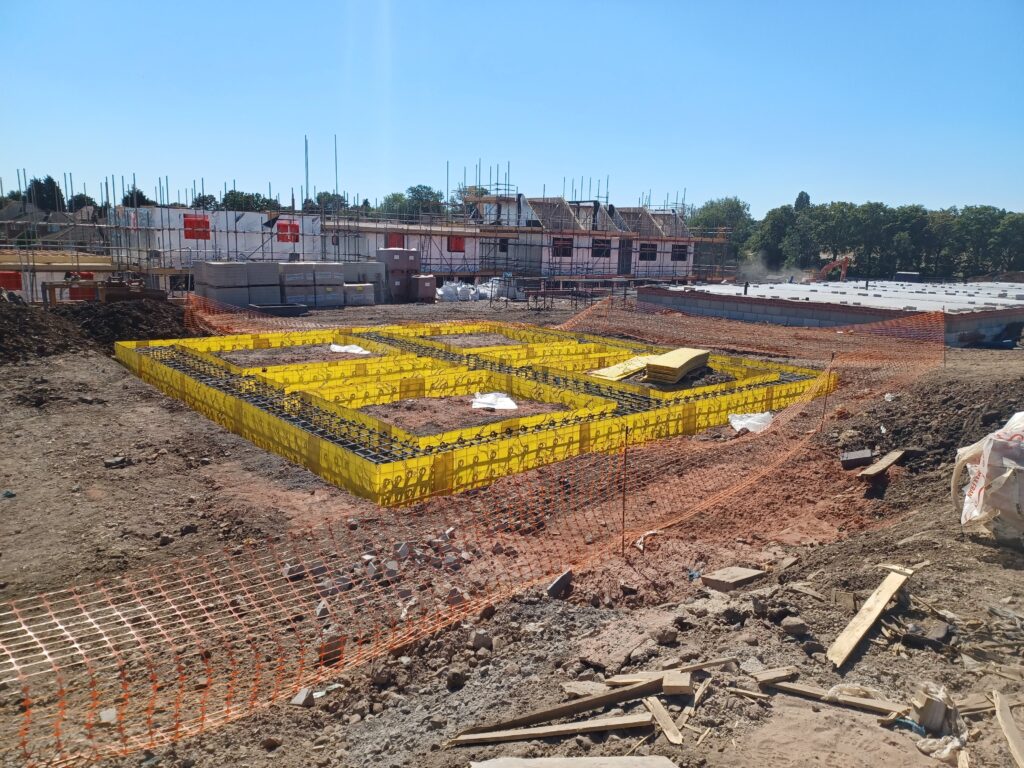Image provided courtesy of Google 2022 via Google Earth Pro. ©Google
Following on from our update in April 2021, CampbellReith is proud to announce the completion of the enabling earthworks at the former landfill at Holly Lane, Erdington. The development is over a former landfilled brick-pit, up to 25m deep, with a high wall around a significant proportion of the site perimeter. CampbellReith carried out detailed geo-environmental (predominantly relating to ground gas) and geotechnical assessments prior to the works to enable the development to proceed.
The earthworks, designed by CampbellReith and undertaken by Dunton Environmental, began in May 2021 and CampbellReith have been responsible for providing verification services relating to the geotechnical and land quality aspects of the works. The earthworks comprised a phased approach to excavation, processing and replacement in order to allow parcels of land to be handed over to Persimmon Homes for construction of 187 residential units. The works were required to allow formation of a 4m thick engineered capping layer that acts as a load transfer platform. This will allow a proportion of the units to be constructed on semi raft / reinforced grillage type foundations, rather than piled foundations.
CampbellReith have formally verified the completion of the earthworks for Phase 1 and are in the process of checking final validation records for Phase 2. In addition, CampbellReith are now providing verification services for the construction element of the earthworks on behalf of Persimmon Homes. This will include level raising required to accommodate the foundations, as well as the provision of clean cover in garden and soft landscaped areas. Standard gas protection measures will be implemented rather than the original proposed mitigation measures by others of a gas collection blanket across the site and a vertical gas barrier around much of the perimeter.
Read the full project case study here.
